Conspiracy Culture

Are conspiracy theories per se wrong? Should we fight them? In this piece, I would like to propose that we should take a differentiated position – one that avoids framing conspiracy culture as a matter of either belief or disbelief. Instead, we should distinguish between (a) conspiracy mythologies, (b) conspiracy theories based on at least partial evidence, and (c) proven conspiracies. We must also recognize the blurred areas in between them. Otherwise, we risk uncritically aligning ourselves with liberal mainstream politics simply out of opposition to the kind of conspiracy mythologies that characterize anti-Semites and corona deniers, among others.
It seems that in culture and society around the world there is currently an explosion of conspiracy narratives. This is usually related to the rise of the populist far right: from Wilders, Baudet and corona deniers in the Netherlands, among others, Trumpism, Alt-Right and QAnon in America, Duterte in the Philippines, to some extent Modi in India and Putinism in Russia, and many more.
The typical far-right conspiracy narratives develop around:
- immigration and globalization; as in the conspiracy narrative of “The Great Replacement” which goes back to the French extreme Right-wing writer Renaud Camus;
- the corona pandemic and environmental politics against climate change, as in the more recent conspiracy narrative of “The Great Reset” which adopts a term coined by the World Economic Forum.
These stories have been summarized in memes such as the following:

The first is a fake EU billboard, the second shows George Soros, a major target of contemporary extreme-Right and anti-Semitic conspiracy narratives – including in the Netherlands, where extreme-Right “journalist” Wierd Duk claimed in De Telegraaf that the anti-Zwarte Piet movement was co-funded by Soros.
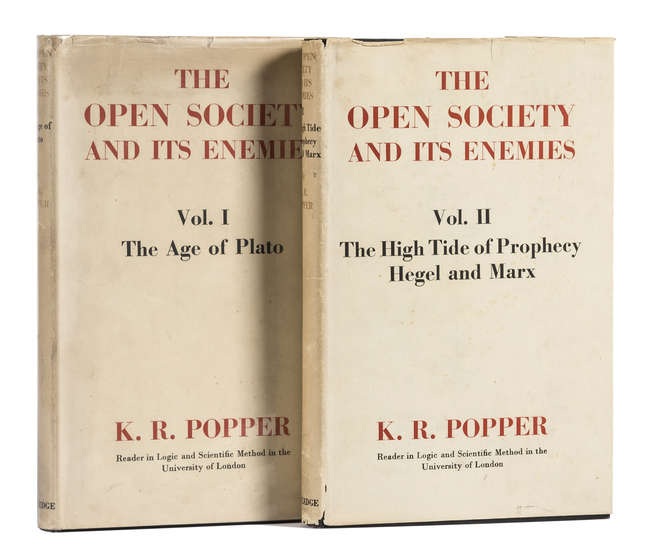
In such a situation, it is tempting to simply side with a rationalist discourse that discredits any talk of conspiracies as invalid and socially and politically dangerous. The term “conspiracy theory” itself was coined in 1945 by the liberal political philosopher and founder of “critical rationalism”, Karl Popper, with the intention of discrediting conspiracy discourse as such. His book “The Open Society and Its Enemies” accuses all political utopias from Plato to Marx of being the enemies of the open society, holding them responsible for a development that ended with fascism and stalinism. As one of the philosophical founders of neoliberalism and an early member of neoliberalism’s main think tank, the Mont Pèlerin Society, Popper defined the “Open Society” as being founded on principles of skepticism and competition. In his definition of “conspiracy theories”, Popper does not distinguish between evidence-based theories and made-up conspiracy mythologies, but equates both and debunks them on the basis of his liberal political philosophy.
QAnon
The following diagram originated in QAnon’s conspiracy subculture:
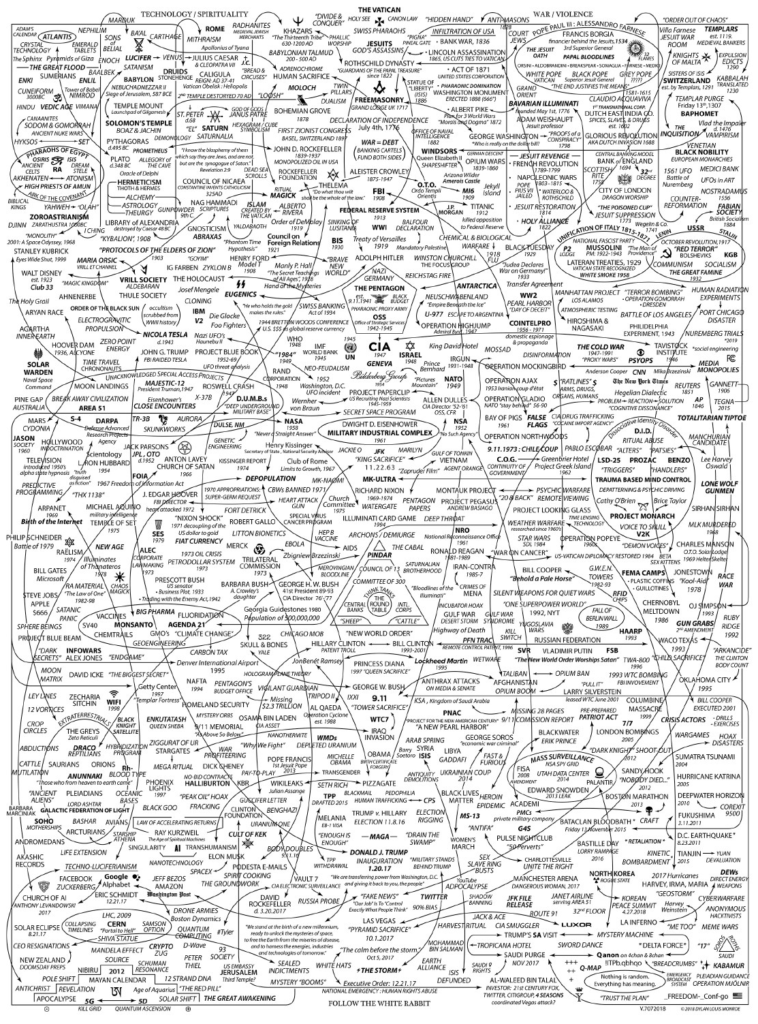
QAnon has its origins in the American far-right “Alt-Right” and its conspiracy mythology “Pizzagate,” according to which top Democratic Party politicians were part of a satanist conspiracy that sexually abused children in the basement of a pizzeria in Washington, DC. “Pizzagate” culminated with a man entering the Washington, D.C. pizzeria with a shotgun because he wanted to free the alleged sex slave children from the basement – only to discover that the pizzeria’s building didn’t even have a basement.

With that, the conspiracy fantasy was only temporarily debunked. A year later, in October 2017, an anonymous poster on 4chan, who identified himself as Q, re-launched the mythology by claiming to be a secret agent working for the U.S. government, and to have insight into secret information about satanic pedophile liberal elites in the “Deep State”. According to him, Donald Trump was working behind the scenes to fight these elites, with an imminent endgame of a “Storm” and a “Great Awakening”.
In addition to Pizzagate, this story was a copy-paste and sampling of three other narratives:
- First, the widespread American evangelical belief in a “rapture” and final battle of Jesus Christ against Evil before Judgment Day. The term “Great Awakening” was already used in American evangelical protestantism of the early 18th century, and has its direct counterpart in the fundamentalist calvinism of the Dutch Bible Belt. It is therefore no coincidence that many Dutch supporters of corona denialism and anti-immigration conspiracy mythologies come from this region and milieu, as was demonstrated when a corona testing center was set on fire in Urk and at the violent anti-refugee protests in Harskamp in 2021. It is not surprising, then, that the QAnon story about satanic pedophile elites resonated widely with the Dutch corona denial movement.
- Second, QAnon was almost certainly plagiarizing the novel “Q” by the Italian left-countercultural activist, artist and writer collective Luther Blissett. Published in 1999, the novel is set in the German Reformation and peasant wars. It tells the story of anonymous messages from a self-declared government agent named “Q” who calls on the revolutionary peasants to wage a final battle against the aristocracy. In the course of the novel, these letters turn out to be disinformation that lures the revolutionaries into a trap and tragic defeat.
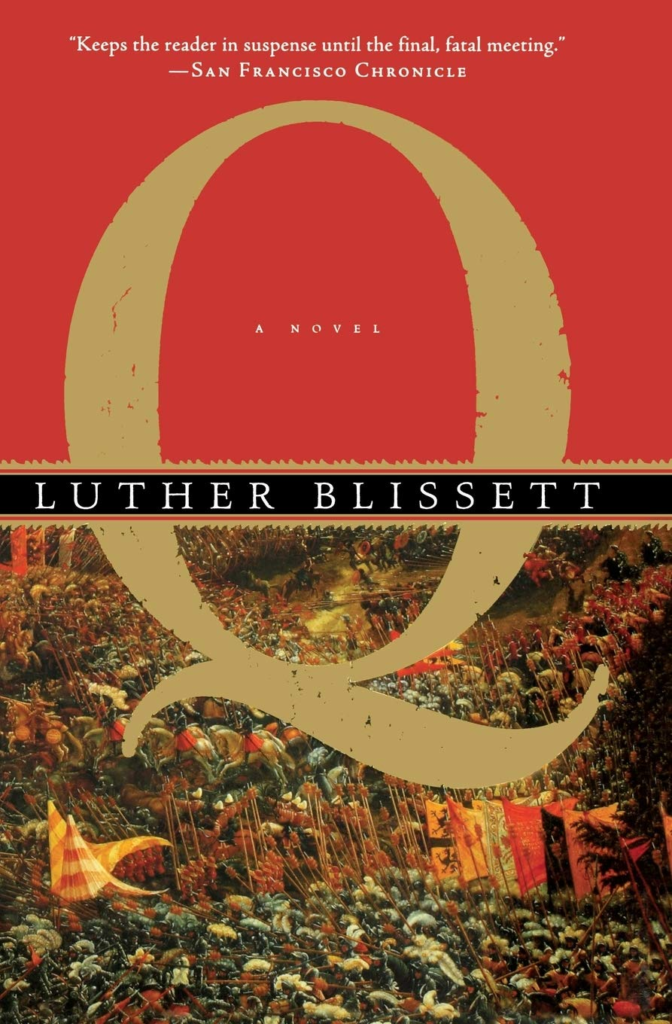
- The plagiarism of Luther Blissett’s “Q” for QAnon’s conspiracy mythology – that is, the sampling of a piece of Left-wing critical political fiction for a Right-wing conspiracy mythology – is not historically new. In a similar way, the foundational document of modern anti-Semitism, the “Protocols of the Elders of Zion”, consisted of copied passages from a 19th century satirical political novel written by a former member of the Paris Commune.
Not surprisingly, the QAnon story leans heavily on old anti-Semitic myths, such as that of a secret world elite that drinks the blood of children. This conspiracy myth has been around since the Middle Ages:
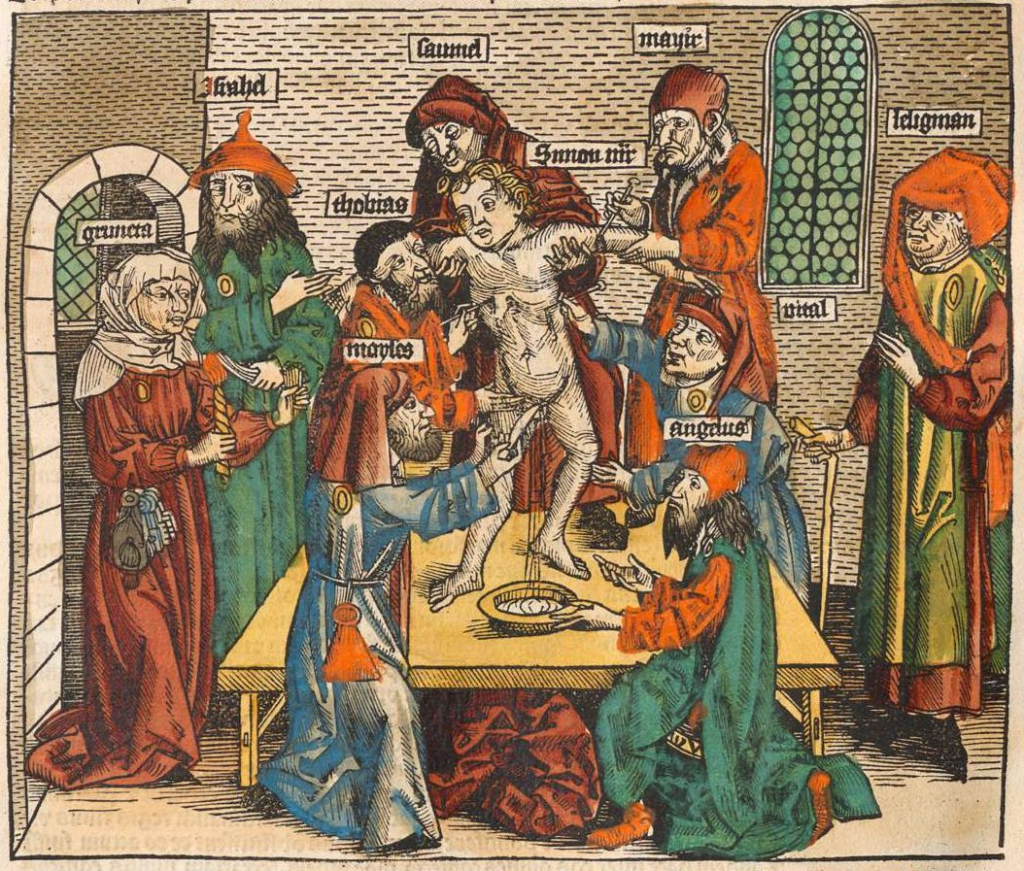

The storming of the Capitol in January 2021 showed how conspiracy mythologies can quickly move from fiction to violent action.
Examples
The above examples show that we need to differentiate between conspiracy theories and conspiracy mythologies.
Conspiracy theories are speculative, but can be supported by evidence and probability. As such, they can be a useful part of political critique, and often have been proven correct in retrospect. Conspiracy mythologies, on the other hand, are pure belief systems that construct an alternate reality.
That said, there is no binary distinction, but many gray areas lie between the two, as the following four examples should demonstrate:
1. NSA Internet surveillance
Before Edward Snowden blew the whistle on the surveillance of the Internet conducted by the NSA and other Western intelligence agencies, this had been a common and widespread conspiracy theory in hacker culture, media activism and even in popular culture, as in this Hollywood film made four years before Snowden:

“Echelon” was the name by which the NSA’s telecommunications surveillance program had been known since the 1970s. Before Snowden, activists who pointed to the high probability of total Internet surveillance by the NSA were often dismissed as being paranoid and conspiracy mythologists.
Through Snowden, the reality of the NSA/Five Eyes Internet surveillance program was revealed to be worse in reality than in most conspiracy theories prior to 2013. This is a striking example for the fact that conspiracy theories should not be categorically dismissed and declared invalid on the mere grounds that they are conspiracy theories (as Karl Popper and his followers do).
2. Abstract expressionist painting
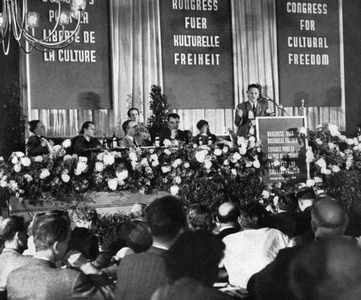
The conspiracy theory is the following: the leading contemporary art of the 1950s, especially the abstract expressionist painting of Jackson Pollock, Willem de Kooning and others, was supported and funded by the CIA. This is true. Worldwide traveling exhibitions of American abstract expressionist painting were funded by the CIA in cooperation with private lenders. The vehicle for this were the CIA front organizations Congress of Cultural Freedom and American Committee for Cultural Freedom. These organizations also published intellectual journals in a multitude of countries and languages. The main promoter of abstract expressionism, the art critic Clement Greenberg, was an official member of the American Committee for Cultural Freedom, as was the painter Jackson Pollock.
Abstract painting was used as an ideological weapon in the Cold War against Soviet communism and its doctrine of socialist realist art, to propagate the liberalism of the West.
Since the 1970s, scholarly articles have appeared on the CIA’s respective activities, but the first comprehensive examination of the CIA’s funding of abstract expressionism was Frances Stonor Saunders’ 1999 book “The Cultural Cold War”.
It should be noted that some of the former CIA front organizations were continued after 1990 by the George Soros Foundation in Eastern Europe. This brings us to the contemporary conspiracy theories and myths about Soros that are cultivated and spread by the far right, almost always mixed with anti-Semitism. Soros, who was a student of Karl Popper, named his non-profit organization Open Society Foundation after Popper’s book “The Open Society and Its Enemies”. Soros’ ambiguous role as a sponsor of democratic grassroots initiatives, while at the same time being a cut-throat capitalist speculator, including with housing in the Netherlands, and a victim of large-scale anti-Semitic attacks, is a perfect example of the gray areas in conspiracy narratives.
Back to the proven facts: anyone who would have claimed in the 1950s and 1960s that abstract expressionism was co-funded by the CIA, or in the 1990s and 2000s that the internet was under total NSA surveillance, would probably have been declared a conspiracy nut. However, both are true and actual conspiracies.
In other conspiracy stories, fact and mythology are more difficult to distinguish:
3. Neoliberalism
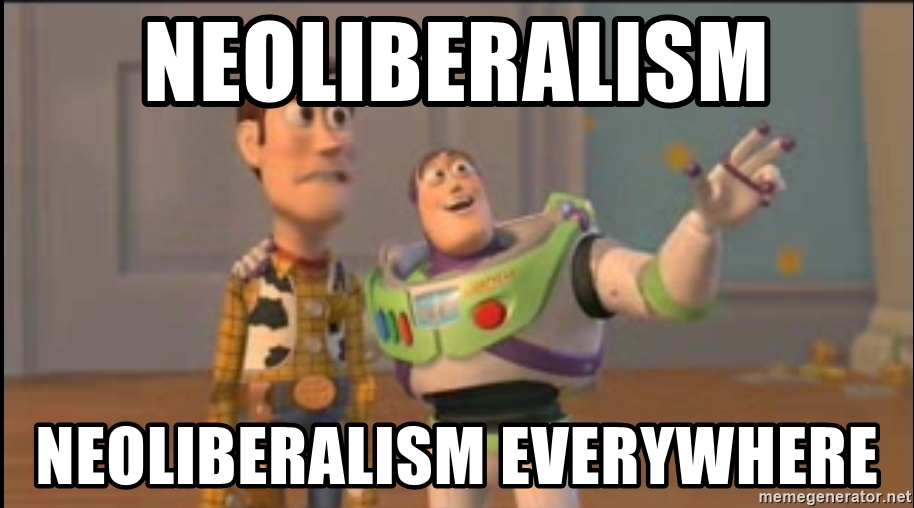
“Neoliberalism” can be characterized as both a factual conspiracy and a Left-wing conspiracy narrative.
Originally, neoliberalism was a term coined by European liberal politicians and strategists in the late 1930s after the economic crash of 1929 had brought classical liberalism into an existential crisis.
Contrary to the current common understanding of the term, neoliberalism was the concept of free-market capitalism combined with government controls, including social security systems, as opposed to laissez-faire capitalism. Neoliberalism, in this original sense, was also the economic system of most postwar Western European countries, including Germany and the Netherlands, and is synonymous with the “Rhineland model.”
One could argue that there was, or is, an actual neoliberal conspiracy, since the main thinkers, politicians and proponents of economic, political and philosophical neoliberalism were, and still are, organized in the Mont Pèlerin Society mentioned above. This society got its name from its first meeting on Mont Pèlerin in the Swiss Alps in 1947. In addition to Popper, it consisted of the original creators of “neoliberalism,” including German liberal politician Alexander von Rüstow and the main thinkers of what is today identified with deregulated, globalized capitalism: the economists Friedrich Hayek, Ludwig Mises and Milton Friedman.
The problem, however, is that Hayek, Mises and Friedman did not initially call themselves neoliberals, while the original neoliberals – such as Rüstow and representatives of the Rhineland model – eventually left the Mont Pèlerin Society because they disagreed with Hayek’s school. Rüstow, the inventor of the term “neoliberalism,” did not even like the conspiratorial nature of the Society, and was accused by the laissez-faire capitalists around Hayek and Mises of being a social democrat in disguise.
The current leftist conception of “neoliberalism” as deregulated laissez-faire capitalism actually identifies the school of Hayek, Mises and Friedman with neoliberalism. Probably – and this is admittedly my own conspiracy theory – this historical misunderstanding stems from a misreading of Michel Foucault’s late lectures. In his lectures, Foucault, being the historian that he was, had rightly referred to the West German neoliberalism of the postwar period and its Rhineland model of the “social market economy.” Outside Europe, his analysis was related to the radical capitalist reforms promoted by Hayek’s school, first in Chile under the Pinochet regime, then in British Thatcherism and in the American Reagonomics of the 1980s. This misinterpretation might haven also due to the fact that “liberal” in America is generally identified (incorrectly) with “left”, so “neoliberal” was chosen to clarify difference. Eventually, this (mis)understanding of neoliberalism was reimported into Europe by political activists during the anti-globalization protests of the late 1990s and early 2000s.
4. Cultural marxism

“Cultural Marxism” as it is used today goes back to an American far-right, anti-Semitic conspiracy narrative. Popular contemporary versions of this narrative are perpetuated by Jordan Peterson, Paul Cliteur and Thierry Baudet, among others. It usually blames “cultural marxism” for corrupting cultural norms and values, tracing its origins to the Frankfurt School while identifying it with contemporary Left-wing academic cultural theories, including feminism, queer theory, postcolonialism, and critical race theory. Often, as in Peterson’s case, it is lumped in with postmodernism, as in his term “postmodern neomarxism.”
The sometimes implicit, sometimes explicit anti-Semitism of the original “cultural marxism” narrative has to do with the fact that the founders of the Frankfurt School were of Jewish descent and fled to the U.S. during the Third Reich. Blaming the Frankfurt School for “cultural marxism” seems a particularly American fallacy, based on the fact that the Frankfurt School called its sociological research “critical theory”. In continental Europe, “critical theory” is understood to mean only the Frankfurt School, while in Anglo-Saxon countries “critical theory” has become an umbrella term for poststructuralism, cultural studies, gender studies, queer studies, postcolonial studies – many or most of which do not refer to the Frankfurt School at all, or only to a very small extent.
But even more hilarious is that the contemporary political right’s rejection of postmodernism was actually shared by the Frankfurt School. Its member Jürgen Habermas accused French postmodern philosophers in the 1980s of being “neoconservatives.” One could even go further and claim that the contemporary political right and the Frankfurt School have more common ground than either would like to admit, since they share ideas and tropes such as cultural pessimism, rejection of mass and popular culture, criticism of alienation and destruction of values in mass society and industrial capitalism. Adorno even appreciated the extreme Right-wing thinker Oswald Spengler and shared his cultural pessimism and occidentalism. Adorno’s rejection of black American music, and the language in which he did that, could resonate perfectly with Thierry Baudet.
There is, however, a grain of truth in the conspiracy narrative of cultural marxism, for several reasons:
- the Marxist sociology of the Frankfurt School focused more on culture than on economics, so it could be called a culturalist school of marxism;
- apart from the Frankfurt School, “cultural marxism” did actually exist, as a real school or movement – but just not today’s Right-wing conspiracy mythologists situate it. British postwar marxist cultural studies, by among others Raymond Williams and Stuart Hall, could rightfully be called “cultural marxism”, as well as their follow-up in the 1980s in a school that called itself cultural materialism (“materialism” in the marxist sense of dialectical materialism). But this literal school of cultural marxism seems too little known outside the academic humanities to serve as a scapegoat and conspiracy mythology.
- Finally, one could argue that the Italian marxism of Antonio Gramsci and his successors was a “cultural” marxism because it abandoned the paradigm of revolution in favor of obtaining discursive hegemony in society. Gramsci, however, is another unsuitable scapegoat for today’s extreme right, since the so-called “Nouvelle Droite” of Alain de Benoist and Guillaume Faye, its counterparts in the European new Right, and their American equivalent, the “Alt-Right” (of Richard Spencer, Jared Taylor and others), have in fact adopted Gramsci’s hegemonic strategy for themselves. One could therefore say that the New Right are cultural fascists who use “cultural marxist” tactics.
The dangers of conspiracy and anti-conspiracy cultures

If there are blurry lines between made-up conspiracy mythologies, plausible conspiracy theories, and actual political conspiracies, then there are conversely blurred lines in many areas of culture. For example, fascist symbols were used as aesthetic transgression in particular subcultures within 1970s and 1980s punk, post-punk and industrial music. In some cases, and with some artists and their fans, these did not remain symbolic provocations, but turned into actual fascist practices. Often, they anticipated – and eventually became part of – the contemporary “Alt-Right.”
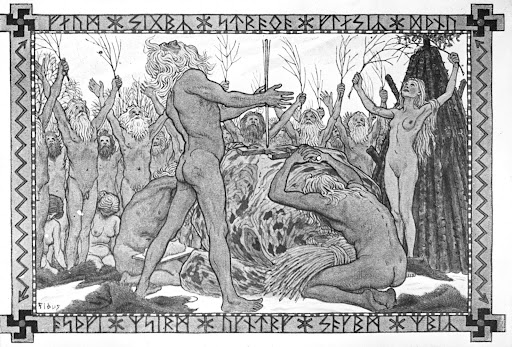
In numerous alternative culture milieus, supporters of new age and hippie environmentalists are now siding with neo-fascists and the extreme-Right in the anti-vaxxer and corona denial movements. This has historical precedents in the late 19th/early 20th century “life reform” movement that advocated vegetarianism, organic food, naturism, liberated sexuality, alternative lifestyles and esotericism, but was also historically affiliated with fascism, especially in Germany.
Here, one might ask to what extent any esoteric belief system can be called a conspiracy narrative. And what then is the difference between an esoteric belief system and a canonical religion? Is religion (or belief in gods or spirits) a conspiracy – in the literal sense of a coming together of spirits? Are religious writings conspiracy mythologies by definition?
If one belongs to the camp of radical atheists like Richard Dawkins and Steven Pinker, the answer would probably be yes. The same might be true if one is in Popper’s camp of critical rationalists. The examples of Dawkins and Pinker, however, show how anti-conspirationism can turn into cultural suprematism and chauvinism. In 2017, Dawkins declared islam the “greatest force for evil in the world today,” and Pinker argued in 2018 that European enlightenment rationalism is universally valid and threatened by fundamentalism and “political correctness.” Dawkins and Forum for Democracy’s chief thinker, Paul Cliteur, published a book together denouncing the concept of Islamophobia that was published by a Right-wing think tank.
What makes up conspiracy culture?
When we talk about “conspiracy culture,” we are almost always talking about intersections of (a) politics, finance and other power structures, (b) pop culture, subculture, visual culture, art, literature and storytelling and (c) belief systems, speculation and esotericism.
Conspiracy culture could thus be called an aesthetic political theology. I intentionally use here the term “political theology” from the fascist legal theorist Carl Schmitt. At the same time as Schmitt, the Jewish marxist essayist and thinker Walter Benjamin had characterized fascism as tending “towards an aestheticization of politics”. This means that any conspiracy narrative, even when it is based on plausible evidence and expresses a valid critique, is always in danger of ending up with false friends, and in the neighborhood of fascists.
The basic assumption of conspiracy culture is the existence of esoteric (hidden) power structures in a hidden narrative that contradicts the official narrative of exoteric (visible) power structures.
Still, the lines between the esoteric and the exoteric, and between fact and speculation, can be blurred as well. Returning to the example of global internet surveillance by the NSA, before Snowden this existed only as speculation, with a mix of probability, mythology, and (still scarce) evidence. Only through the leaked evidence it became a factual account.
Conversely, some actual conspiracies have come to light that are perhaps wilder than even the wildest conspiracy fantasy. In the Netherlands, a good example is the MLPN (Marxist-Leninist Party Netherlands), a fake maoist party that was run by the Dutch secret service BVD from 1968 until the early 1990s in order to spy on China.
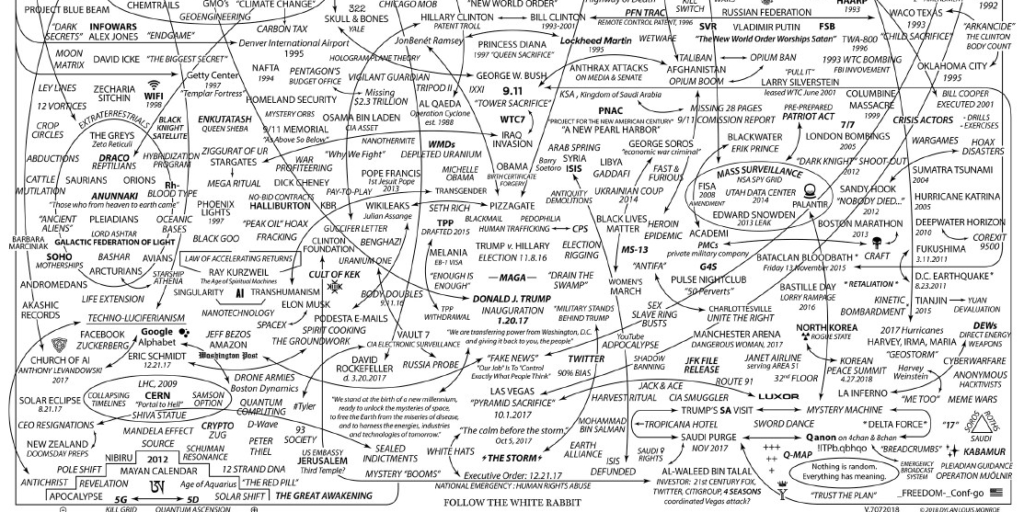
If we go back to the original diagram created in the QAnon subculture, we learn from it that QAnon has grown, – or perhaps was even designed – to become a conspiracy narrative that potentially contains all other conspiracy narratives. It’s likely the characteristic of all conspiracy mythologies is that they strive to become universal world explanation models.
QAnon now seems to be emancipating itself from Trumpism and its original narrative, becoming a more generic conspiracy mythology of child-abusing satanic world-ruling elites.
While these mythologies obviously need to be debunked and refuted, at the same time I propose to take them seriously. With the Italian Wu-Ming collective (who succeeded the Luther Blissett collective that wrote the novel “Q”) and Swiss media researcher Felix Stalder, I share the view that even the most absurd conspiracy stories contain kernels of truth. For QAnon, as Felix Stalder points out, the story of liberal elites drinking the blood of children is literal nonsense, and openly anti-Semitic, but it still has a kernel of truth if one reads it metaphorically: namely, that a wealthy elite is destroying the future of children in times of ever-growing social inequalities; particularly in a country like the US, where higher education has become unaffordable for ordinary people. Neoliberal politicians like Hillary Clinton – who has served on the board of Walmart, among others – are actively part of a vampiric system that accumulates wealth at the expense of future generations.
Conspiracy culture and the sublime

In retrospect, today’s Alt-Right, QAnon and Corona denial movements are a continuation of a long history of conspiracy mythologies and cultures. My proposal was to characterize conspiracy culture as an aesthetic political theology. In terms of aesthetic theory, conspiracy mythologies operate in the mode of the sublime – i.e., that which is overwhelming, terrifying, infinite, and formless (as in horror and natural disaster films, gothic novels, or landscape paintings of the Romantic era).
The sublime is also evoked in language like QAnon’s “The Storm” (which became the real storming of the Capitol), and in the infinity of names and connections on the QAnon conspiracy chart. In the 1980s, the philosopher Jean-François Lyotard characterized the sublime experience as that “which leads all thought (including critical thought) to its limits”. This also seems a good description of what happens in conspiracy subcultures.
The story of being caught in sublime networks and powers is the core problem of conspiracy mythologies – because they seem to offer no way out except through irrational conclusions and mob-like hatred and violence. The answer, however, cannot be to fundamentally discredit the conspiracy narratives, as critical rationalists would do, because this would exclude legit critique and alternative imagination.
Florian Cramer
